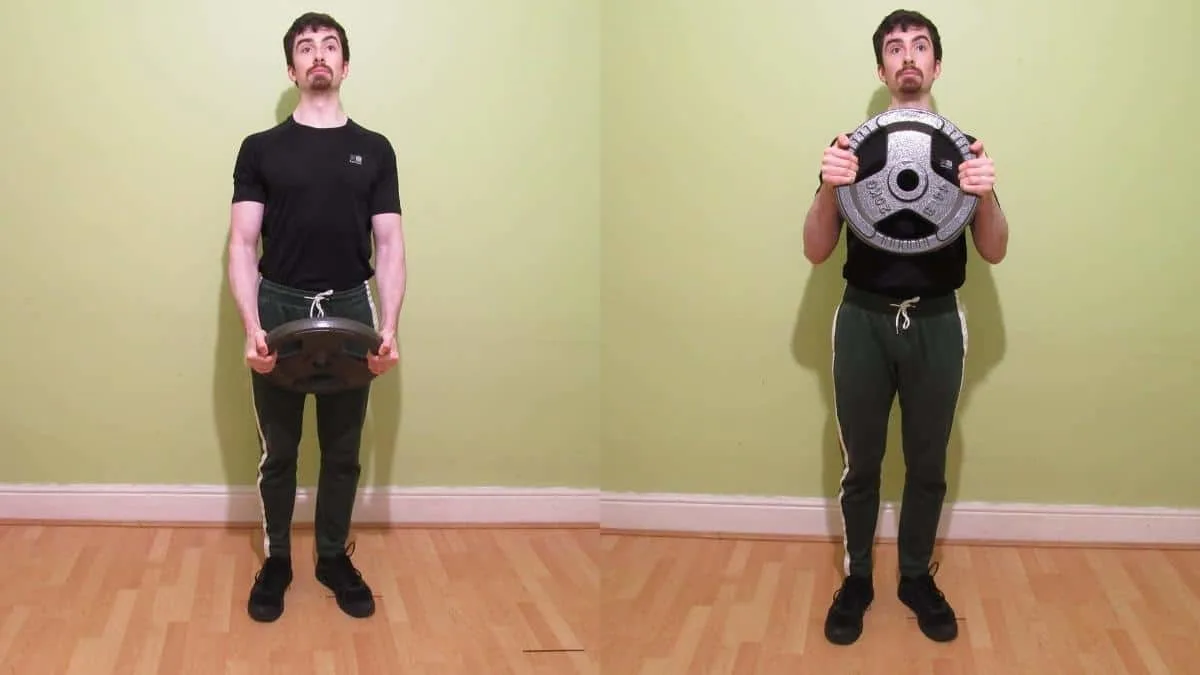The plate hammer curl is an effective and highly convenient exercise for strengthening the biceps brachii muscle as well as the brachialis and brachioradialis muscles. This is because you literally just need a weight disc and a few spare minutes to perform the movement. As such, it’s a particularly good arm exercise for those who train at home and have limited equipment.
The downside to plate curls is that many people will quickly max out the heaviest weight plate they have access to, which in most cases will be 45-55lbs. Therefore, your best bet is to perform this exercise for high repetitions. This way, you’ll still be able to train close to muscular failure while lifting lighter weights than you would on a dumbbell hammer curl.
Related Exercise: Decline DB hammer curl
Plate hammer curl exercise details
- Main Muscles: Biceps brachii, brachialis, brachioradialis
- Secondary Muscles: Forearm extensors, forearm flexors
- Exercise Type: Strength
- Exercise Mechanics: Isolation
- Difficulty Level: Beginner
- Equipment Needed: Weight plate
How to perform a plate hammer curl
- Hold a weight plate in the center of its outer rims with both hands.
- Let the plate rest against your thighs.
- Curl the weight toward your shoulders.
- Squeeze your forearms and biceps as they make contact.
- Lower the weight disc down until your elbows are almost locked out.
- Repeat for 3-4 sets of 12-25 reps.
Plate hammer curl training tips
Standing plate hammer curls are a unique exercise that requires a more measured approach to get the best results. In other words, don’t just pick up a weight disc and start curling—follow these training tips instead.
Use a full range of motion
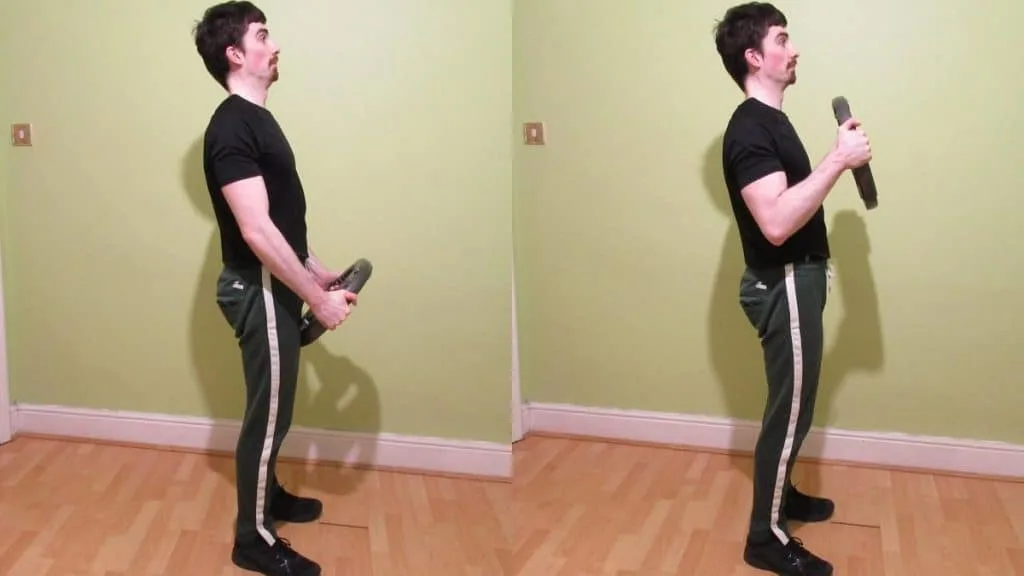
Full ranges of motion help you to gain strength in all parts of a repetition. Conversely, if you perform partial reps, then you’ll likely find that you’re strong in the areas of the lifting motion that you train in but much weaker in the areas that you neglect.
Doing half reps also gives you a false sense of strength, which has both a harmless and a sinister side to it. Half reps are harmless in the sense that you’re only fooling yourself. After all, some people may genuinely be trying their hardest to work out correctly, but they might just be ignorant of the correct form. Hopefully you can help them after reading this article!
On the other hand, lifting heavier weights than your arms can handle throughout a full range of motion can leave you vulnerable to injuries. This is especially true if you then decide to increase your range of motion while lifting a weight that’s excessively heavy because you won’t have developed the necessary strength in all parts of the exercise.
Lift one plate per arm
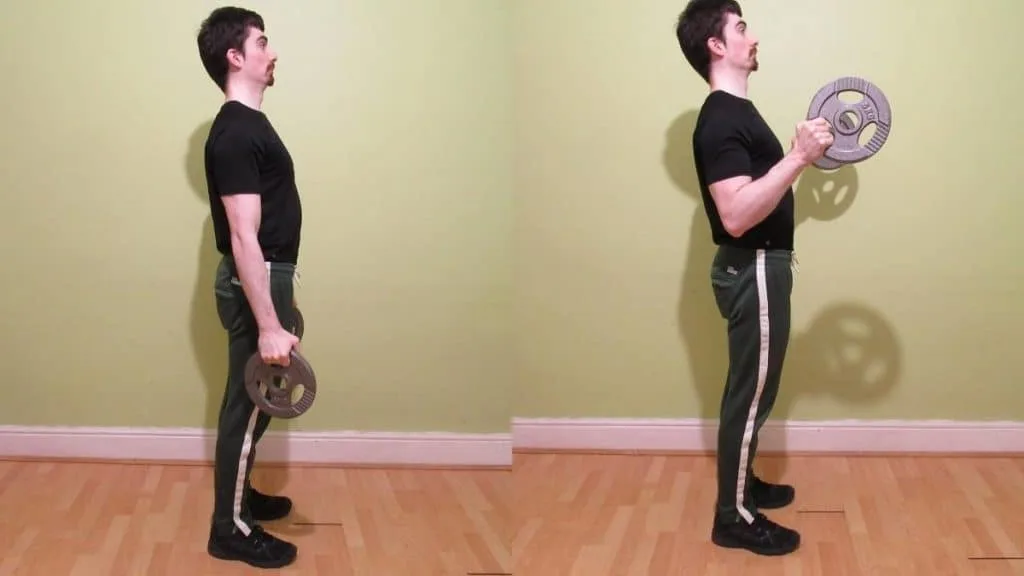
Not everyone has access to 100lb weights discs to perform heavy plate hammer curls. Therefore, if you’ve already been lifting weights for a while, then you might find that the heaviest weight plates that you or your gym has available are no longer sufficient for you to continue gaining strength and muscle mass.
There are two solutions to this problem. The latter, as you’ll learn properly in just a sec, is to use high reps exclusively. But the other option is to simply curl two weight plates.
To do this unilateral plate hammer curl variation, you grab the outer rim of two weight discs and then curl them toward your shoulder like you would if you were doing a seated hammer curl.
What makes this version unique is that, in order to keep the weight discs straight, you have to rely on the radial deviation strength of your forearm. This is a crucial lower arm function that most lifters neglect, so by doing the traditional plate hammer curl unilaterally, you can actually make your physique stand out by working muscles that most people would overlook.
Use the right rep range

The plate hammer curl is similar to the hammer curl to shoulder press in that both exercises are naturally better suited to higher reps.
However, as we just established above, you can also do the hammer plate curl with two weight discs so that you can overload each arm with more resistance.
That said, many lifters, including me, prefer the convenience of the standard plate hammer curl, where you lift one weight disc with both arms. But since many people can already comfortably lift the heaviest weight plate in their gym, you need to use high reps in order to get close enough to muscular failure to stimulate hypertrophy. [1]
This makes the movement an ideal finishing exercise. After doing hammer curls with a barbell or other such training drills, you can perform high-rep plate hammer curls to burn out your biceps, brachialis, and brachioradialis.
Moreover, since the brachialis is a slow-twitch dominant muscle, it’s actually optimal to train it with high reps and a slower tempo to recruit the fatigue-resistant slow-twitch muscle fibers. See our high repetition bicep workout if you want more information.
Maintain constant tension
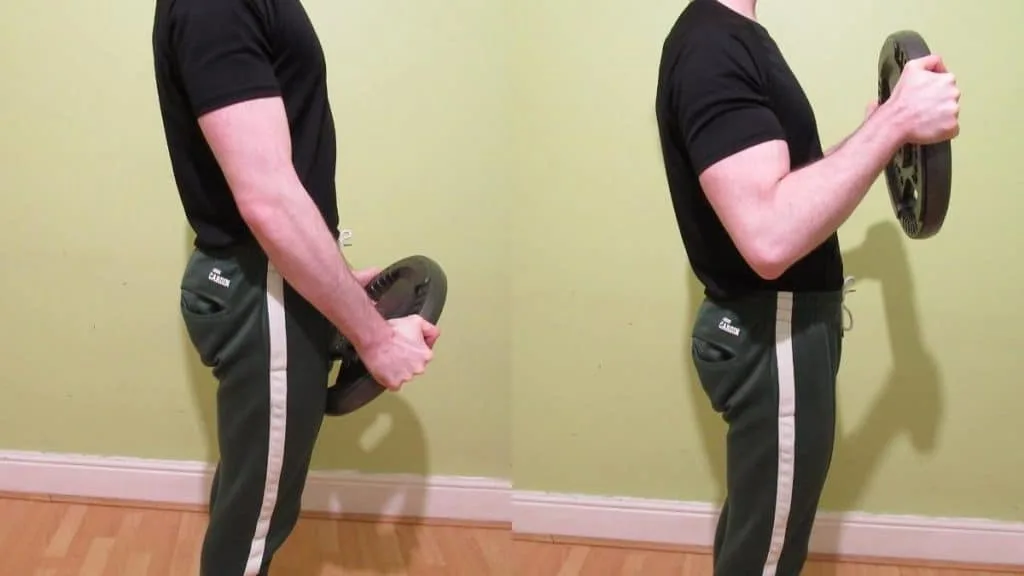
As a general rule of thumb, you want to maintain constant tension on exercises that you perform for high reps. This is because the goal of high-rep plate hammer curls—from both a hypertrophy and a muscular endurance perspective—is to maximize the pump, which is to say, the accumulation of lactate in the target muscles. [2]
So to maintain constant tension on your arms, don’t lock your elbows out completely. This isn’t to say that you should perform half reps because you definitely shouldn’t. The idea is to get the fullest range of motion possible while not locking out your elbows.
If you want to focus on your brachialis and brachioradialis rather than your biceps, then you can do reverse curls with a weight plate instead of using a hammer grip.
Read More: Ladies back and bicep workout
Conclusion
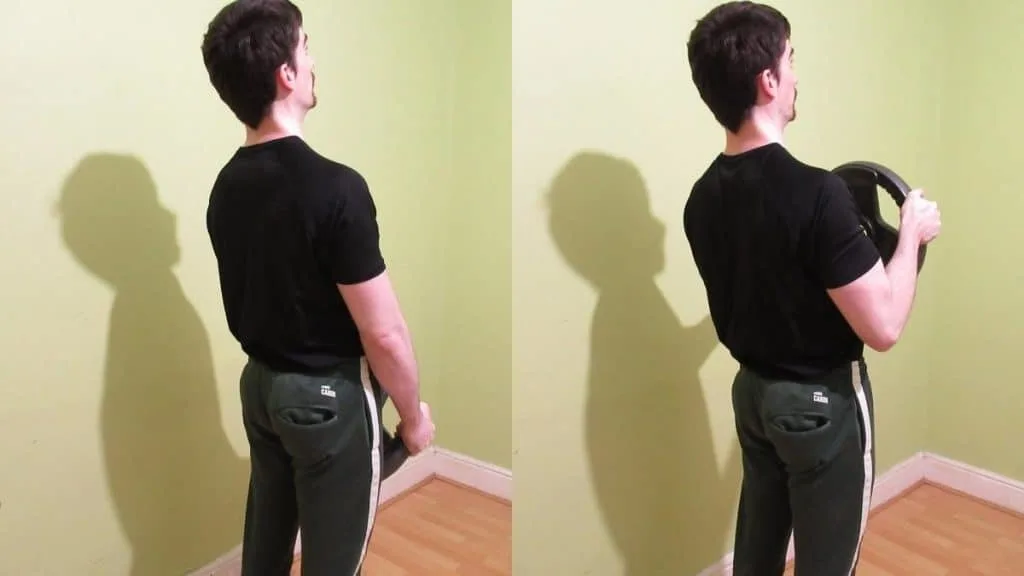
Doing a hammer curl with a plate is not only convenient; it’s also a great way to get your arms used to handling lactic acid since, in all likelihood, you’re going to be performing this exercise for high reps.
Yet, if you’re training for strength, then you can also do the plate hammer curl with two weight discs. This version ensures that both of your arms receive equal work, which is particularly beneficial if you have muscle imbalances.
References
- Lasevicius, T., Schoenfeld, B. J., Silva-Batista, C., Barros, T. D. S., Aihara, A. Y., Brendon, H., Longo, A. R., Tricoli, V., Peres, B. D. A., & Teixeira, E. L. (2019). Muscle Failure Promotes Greater Muscle Hypertrophy in Low-Load but Not in High-Load Resistance Training. Journal of Strength and Conditioning Research, Publish Ahead of Print. https://doi.org/10.1519/jsc.0000000000003454
- Ohno, Ando, Ito, Suda, Matsui, Oyama, Kaneko, Yokoyama, Egawa, & Goto. (2019). Lactate Stimulates a Potential for Hypertrophy and Regeneration of Mouse Skeletal Muscle. Nutrients, 11(4), 869. https://doi.org/10.3390/nu11040869

